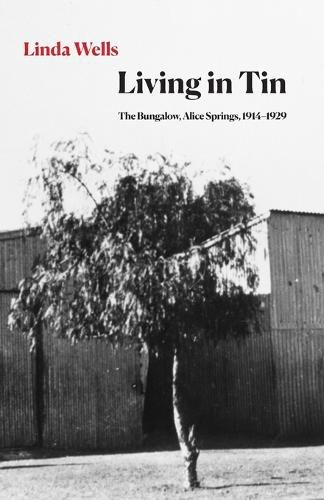Readings Newsletter
Become a Readings Member to make your shopping experience even easier.
Sign in or sign up for free!
You’re not far away from qualifying for FREE standard shipping within Australia
You’ve qualified for FREE standard shipping within Australia
The cart is loading…






This title is printed to order. This book may have been self-published. If so, we cannot guarantee the quality of the content. In the main most books will have gone through the editing process however some may not. We therefore suggest that you be aware of this before ordering this book. If in doubt check either the author or publisher’s details as we are unable to accept any returns unless they are faulty. Please contact us if you have any questions.
The Bungalow began in 1914, as a tin shed in the small colonial outpost of Alice Springs. It was built initially to house Topsy Smith, of Arabana descent, and her seven children after their Welsh-born father, Bill Smith, had died. Over the years that followed, many more children with Aboriginal mothers and (largely absent) white fathers were brought to live at the Bungalow until, by 1929, when it was relocated out of town, about sixty children were living and growing up there. They were cared for primarily by Topsy Smith as well as the town's first schoolteacher, Ida Standley. The other central adult figure of this story is Sergeant Stott who oversaw the establishment and operation of the home. Drawing on archival documents, oral histories and interviews with living descendants, this story gives voice to women, children, and First Nations people. Researched history is interspersed with passages of creative non-fiction that create a palpable sense of time and place and bring the story to life. The complexity and nuance of engagement between Indigenous and non-Indigenous Australians is also explored; relationships that have for so long been downplayed in works of Australian history. As well as presenting the fascinating and pivotal story of the Bungalow in Alice Springs from 1914 to 1929, this work offers a model for new ways of creative, postcolonial storytelling about Australia, her history and her present, and the inextricable links between the two.
$9.00 standard shipping within Australia
FREE standard shipping within Australia for orders over $100.00
Express & International shipping calculated at checkout
This title is printed to order. This book may have been self-published. If so, we cannot guarantee the quality of the content. In the main most books will have gone through the editing process however some may not. We therefore suggest that you be aware of this before ordering this book. If in doubt check either the author or publisher’s details as we are unable to accept any returns unless they are faulty. Please contact us if you have any questions.
The Bungalow began in 1914, as a tin shed in the small colonial outpost of Alice Springs. It was built initially to house Topsy Smith, of Arabana descent, and her seven children after their Welsh-born father, Bill Smith, had died. Over the years that followed, many more children with Aboriginal mothers and (largely absent) white fathers were brought to live at the Bungalow until, by 1929, when it was relocated out of town, about sixty children were living and growing up there. They were cared for primarily by Topsy Smith as well as the town's first schoolteacher, Ida Standley. The other central adult figure of this story is Sergeant Stott who oversaw the establishment and operation of the home. Drawing on archival documents, oral histories and interviews with living descendants, this story gives voice to women, children, and First Nations people. Researched history is interspersed with passages of creative non-fiction that create a palpable sense of time and place and bring the story to life. The complexity and nuance of engagement between Indigenous and non-Indigenous Australians is also explored; relationships that have for so long been downplayed in works of Australian history. As well as presenting the fascinating and pivotal story of the Bungalow in Alice Springs from 1914 to 1929, this work offers a model for new ways of creative, postcolonial storytelling about Australia, her history and her present, and the inextricable links between the two.